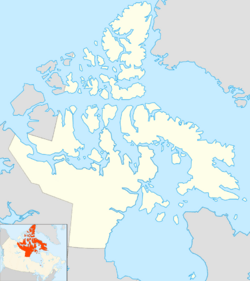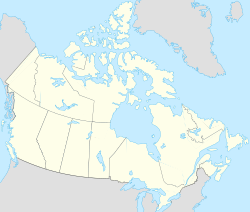Halford Island facts for kids
| Geography | |
|---|---|
| Location | Frobisher Bay |
| Coordinates | 62°15′N 66°05′W / 62.250°N 66.083°W |
| Archipelago | Canadian Arctic Archipelago |
| Administration | |
|
Canada
|
|
| Nunavut | Nunavut |
| Region | Qikiqtaaluk |
| Demographics | |
| Population | Uninhabited |
Halford Island is a small, empty island located far north in Canada. It's part of a huge group of islands called the Canadian Arctic Archipelago. This island sits in a large bay known as Frobisher Bay, which is found in the territory of Nunavut. It lies just south of a place called Buerger Point.
Contents
What is Halford Island?
Halford Island is an uninhabited island. This means no people live there permanently. It's a small piece of land surrounded by the cold waters of the Arctic. The island is part of the larger Baffin Island area.
Where is Halford Island Located?
Halford Island is in the Canadian Arctic Archipelago. This is a massive group of islands in northern Canada. It's located in Nunavut, which is Canada's largest and northernmost territory. Nunavut is known for its vast, icy landscapes and unique wildlife.
Exploring Frobisher Bay
Halford Island is specifically found within Frobisher Bay. This is a large inlet of the Atlantic Ocean in the southeastern part of Baffin Island. The bay is named after Sir Martin Frobisher, an English explorer who sailed there in the 1570s. The waters here are often very cold and can be covered in ice for much of the year.
Life in the Arctic
Even though Halford Island itself is uninhabited, the surrounding Arctic environment is full of life. The Arctic is a polar region known for its extreme cold and long periods of darkness in winter. In summer, there are long hours of daylight.
Arctic Animals and Plants
The land around Halford Island is part of the Arctic tundra. This means there are no tall trees. Instead, you might find small plants like mosses, lichens, and low-growing shrubs. Many animals are adapted to live in this harsh environment. These can include polar bears, seals, and various types of birds that migrate to the Arctic for the summer.



